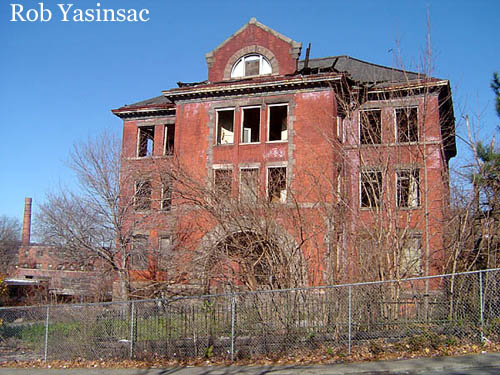
School 6, Ashburton Avenue. November 2006.
YONKERS - GALLERY 1

School 6, Ashburton Avenue. November
2006.
The City of Yonkers is
undertaking an Urban Renewal plan to redevelop Ashburton Avenue. A central
feature of this plan is the widening of the road itself in order to make it more
automobile-friendly. As urban renewal plans go, the city will necessitate the demolition
of a few buildings, many of them on the south side of Ashburton Avenue. The
house at 150 Warburton (corner with Ashburton) would be demolished to accommodate
a turning lane. The house is designated as a "locally significant
structure" by the city planning board, and it believed to once have been
the home of World War II hero General Joseph Stillwell.
Although not part of the official plan, as it is part of a
private development, Public School 6 is also slated for demolition. Milio
Management is working towards an agreement with the city to acquire the
property, demolish the school and adjacent commercial building, and build a
generic, chain drug store for Walgreen's. School 6, like so many other of
Yonkers' public school buildings of the very late 19th-century, was designed by Yonkers
architect C.C. Chipman. School 6 closed in the mid-1980s as a result of a
finding that the city of Yonkers engaged in the segregation of its school system
by concentrating the construction of public housing projects in the southwest
corner of the city. Students were then bussed to magnet schools elsewhere in the
city, and this great building was abandoned. Yonkers is still grappling with the
fallout of the segregation case today.
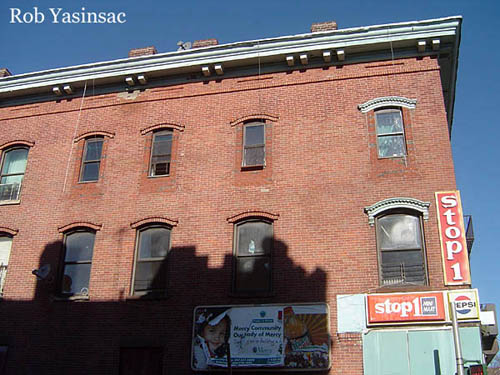
Commercial building, NW corner of
Ashburton Avenue and Broadway. November 2006.
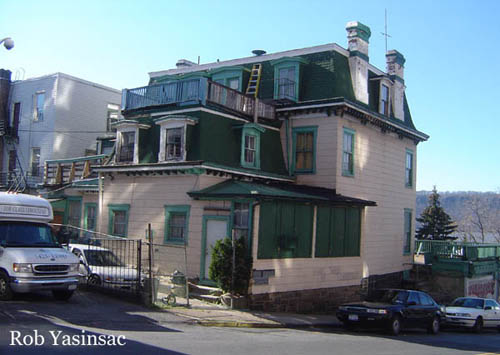
150 Warburton Avenue. November 2006.

Warburton Deli, 150 Warburton Avenue, November 2006.
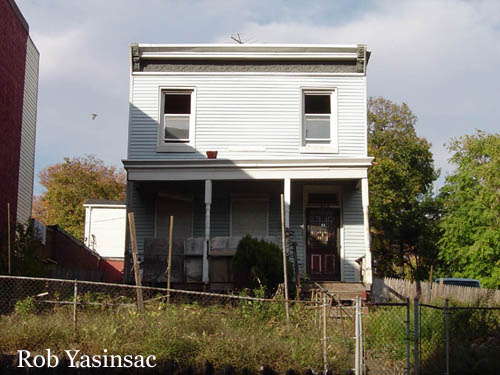
161-165 Ashburton Avenue, November 2006.
"Abandoned" and slated for demolition.
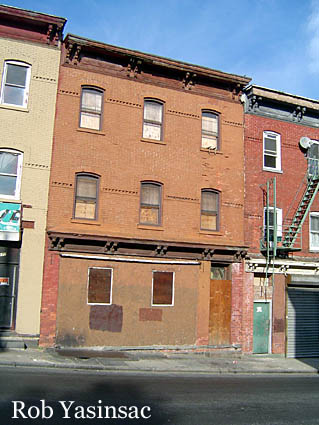
Boarded up on Ashburton. November 2005.
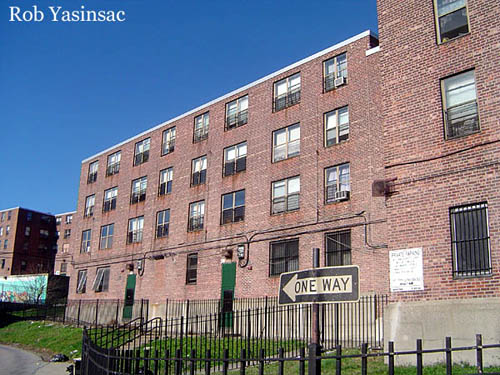
Mulford Gardens. Vineyard Avenue, November 2006.
Mulford Gardens, the oldest of the city's public housing projects (built ca. 1940) is soon to be demolished as well. The housing projects eventually became magnets for crime and other quality-of-life issues, and were pronounced a failure by design. The current prevailing philosophy regarding low-income housing is to build low-rise duplexes with front and rear yards. Each unit would have its own walkup-up and other features individual to each unit, eliminating unmonitored "common spaces" where crime often occurs. Oscar Newman led the design and construction of the new low-income housing units in the early 1990s; his ideas are represented on the Defensible Space website.
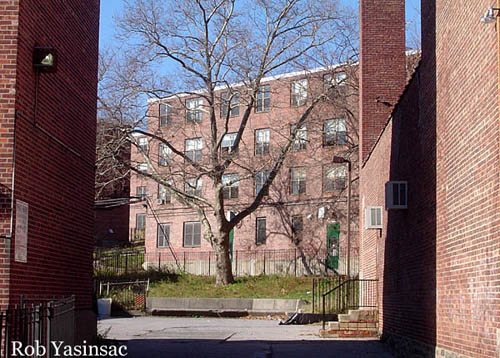
Mulford Gardens. Vineyard Avenue, November 2006.
Yonkers
Ruins homepage
This page copyright © 2007
by Robert J. Yasinsac.
Reproduction or copying of text and/or photography in any form without
permission of the author is not permitted.